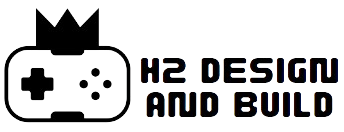In the ever-evolving landscape of innovation and problem-solving, Design Thinking has emerged as a powerful methodology that emphasizes a holistic and user-centric approach. Rooted in creativity and empathy, Design Thinking has gained widespread recognition as a dynamic problem-solving framework applicable across various industries and domains.
Understanding Design Thinking:
At its core, Design Thinking is not just a process; it’s a mindset. It encourages a collaborative and iterative approach to problem-solving, placing the end user at the center of the design process. Originating from the world of design, it has found applications in business, education, healthcare, and beyond.
The Design Thinking Process:

- Empathize: At the outset, Design Thinking emphasizes understanding the problem from the user’s perspective. This involves immersing oneself in the user’s experience, gathering insights, and developing a deep sense of empathy. Tools such as user interviews, observations, and surveys are commonly employed during this phase.
- Define: Once empathy is established, the next step involves defining the problem. This includes synthesizing the collected information, identifying patterns, and framing the problem in a way that guides the subsequent stages of the process. Clarity in problem definition is crucial for generating effective solutions.
- Ideate: Ideation is the phase where creativity takes center stage. Teams brainstorm and generate a multitude of ideas without judgment. The focus is on quantity rather than quality during this stage. Techniques such as brainstorming sessions, mind mapping, and the “Crazy 8s” method are commonly used to stimulate creativity.
- Prototype: Prototyping involves translating ideas into tangible representations. This could range from rough sketches and wireframes to physical models, depending on the nature of the problem. Prototypes serve as a means to quickly test and iterate on concepts, allowing for refinement before full-scale implementation.
- Test: Testing is an integral part of the Design Thinking process. It involves obtaining feedback from users on the prototypes, refining solutions based on this feedback, and iteratively testing again. This iterative cycle continues until a viable and user-approved solution is achieved. The art and science of icon design in mobile applications, more details here.
Key Principles of Design Thinking:
- Human-Centered Design: Design Thinking places the human experience at the forefront. Understanding and addressing the needs, desires, and pain points of the end user is foundational to creating successful and meaningful solutions.
- Collaboration: Design Thinking thrives on collaboration. Cross-functional teams bring diverse perspectives and skill sets to the table, fostering a rich exchange of ideas and promoting innovative solutions.
- Iterative Process: The iterative nature of Design Thinking allows for constant refinement. Each iteration builds upon the insights gained from the previous one, ensuring that the final solution is well-informed and effective.
- Mindful Prototyping: Prototyping is not just about creating a physical or digital representation; it’s a tool for learning. Rapid prototyping allows teams to test assumptions quickly and make informed decisions about the viability of different solutions.
- Bias Toward Action: Design Thinking encourages a bias toward action. Instead of getting stuck in prolonged planning phases, the emphasis is on quickly moving to prototyping and testing to learn from real user interactions.
Applications Across Industries:
1. Business and Innovation:
Design Thinking has become a cornerstone for businesses aiming to innovate. It helps organizations identify unmet customer needs, create user-friendly products, and stay ahead of the competition.
2. Education:

In the field of education, Design Thinking fosters creativity and problem-solving skills among students. It encourages a hands-on, experiential learning approach that prepares individuals for real-world challenges.
3. Healthcare:
Design Thinking is making significant inroads in healthcare by focusing on patient-centric solutions. From improving the patient experience to optimizing healthcare processes, its impact is evident in creating more empathetic and effective healthcare services.
4. Technology:
The tech industry widely adopts Design Thinking to create user-friendly interfaces and seamless digital experiences. It has become a fundamental part of software and product development methodologies.
Challenges and Criticisms:
While Design Thinking has proven to be a valuable approach, it is not without its challenges and criticisms. Some argue that it can be time-consuming, and its emphasis on empathy might lead to subjective decision-making. Additionally, the reliance on interdisciplinary teams can sometimes pose challenges in terms of communication and coordination.
Design Thinking offers a refreshing and effective approach to problem-solving, encouraging innovation and user-centricity. Its principles can be applied across diverse fields, making it a versatile framework for tackling complex challenges. As industries continue to evolve, embracing Design Thinking as a holistic problem-solving methodology can pave the way for transformative solutions that truly resonate with end users.
For further exploration of Design Thinking and related topics, you can refer to the which provides a comprehensive overview of the methodology and its applications. Additionally, websites like ign.com offer insights into how Design Thinking is influencing the gaming and entertainment industries, showcasing its versatility in various domains.




